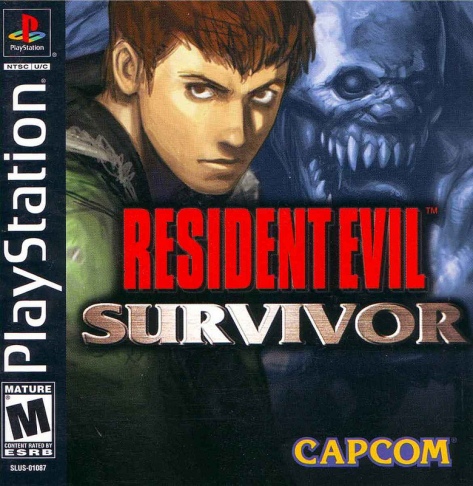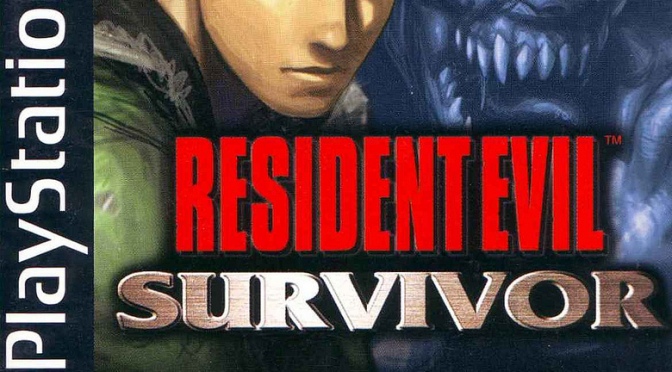
It is safe to say that in the year 2000, Resident Evil was riding pretty high. A successful trilogy had been released on the Playstation, the high quality sequel Code Veronica just debuted on the Dreamcast, and a big-budget movie was in the works. To sweeten the deal, a spin-off from the main series had just released in Japan, where the usual third-person perspective was traded for a first-person view. The idea was to create a Resident Evil game that would utilize light gun controllers and (hopefully) steal some thunder from the arcade shooter market. But this idea relies on the actual use of light gun controllers, a feature which was removed from the American release. It also relies on the game not being a terrible pile of crap, which Resident Evil: Survivor most certainly is.
At this point, you may be asking yourself, “How does a game that was developed for a light gun handle with a traditional controller?” Very poorly would be the response. Imagine playing the original Resident Evil, with its delightful tank controls, from the first person. There is no strafe or sidestep, and anytime you draw your gun, the main character stops completely to fire. Simply navigating the game is a frustrating ordeal, since the protagonist constantly gets stuck against any object in his way, and the combat is no better.
The logical upgrade that would come from a first-person view would be the ability to better target zombies’ vital bits (read: head and knees). A player can certainly aim at these weak spots, but it makes no difference within the game. Shooting a zombie’s head deals out no greater damage than a straight shot to the finger (which makes no sense in any sort of world, video game or otherwise). To further complicate things, the speed at which shots may be fired is limited. For some strange reason, there is a rate-of-fire limit in Survivor; sort of cooldown between every single shot from a gun. So be prepared to take plenty of time dispatching each frustrating enemy in this turd.
Even the creatures in this game look terrible. The original Resident Evil knew that the processing power of the Playstation had its limits, so the developers relied on clever lighting and camera angles to compensate. Survivor does not have such luxuries, so every bland and jagged zombie looks terrible against the plain and pixelated backgrounds. The audio is just as bad, with buggy sound effects and schlocky voice acting in every cutscene.
The story is blessedly non-canon, with a tale of some random amnesiac surviving a plane crash on the Umbrella Corporation’s private island, which is (of course) filled with biological horrors. But even within the realm of spin-offs, which normally change up the traditional story and experiment with details, Survivor sticks to a rather bland RE formula. Hero enters town, zombies are present, hero finds out Umbrella makes biological weapons (no duh), bigger zombies show up, some civilians need saving, Tyrant boss, rocket launcher, self destruct sequence, cut to credits.
When my brother and I rented Survivor from our local Blockbuster Video back in the Autumn of 2000, we were so excited to have another Resident Evil game to play. Within just two hours, we felt bamboozled by our beloved Capcom. With its terrible controls, bland story, and bizarre combat restrictions, there were no redeeming factors for this awful game. At least the lack of interesting plot developments means the average player can just skip this RE entry. So for those of you who enjoy the Resident Evil series (or survival horror in general) do yourself a favor and avoid Survivor. And avoid Operation Raccoon City while your at it. Honestly, it’s a toss-up as to which game is worse.

